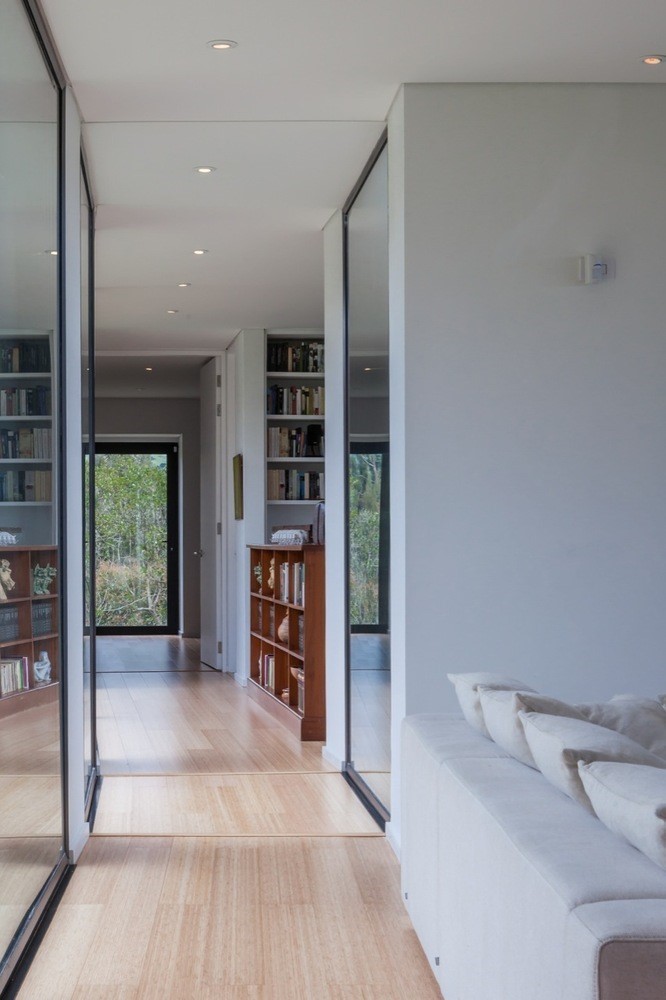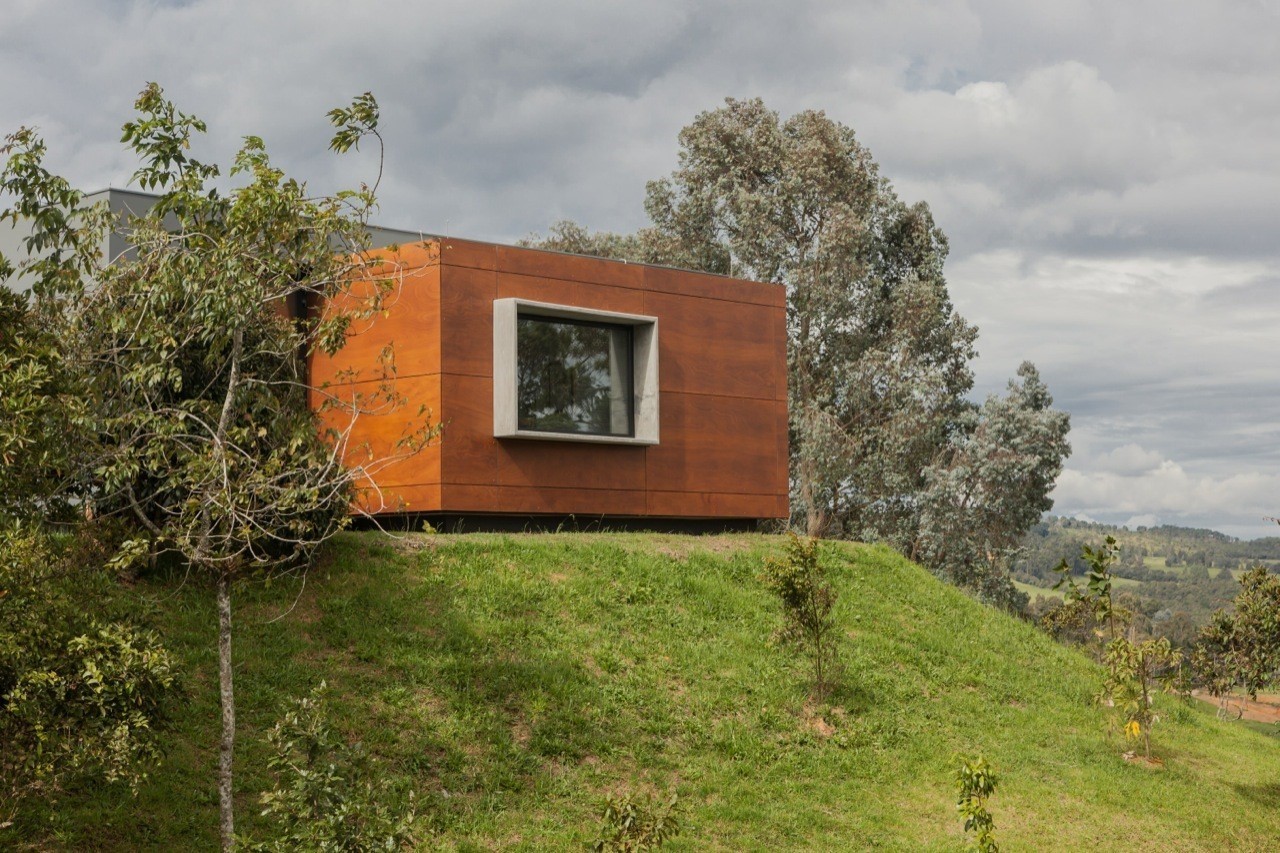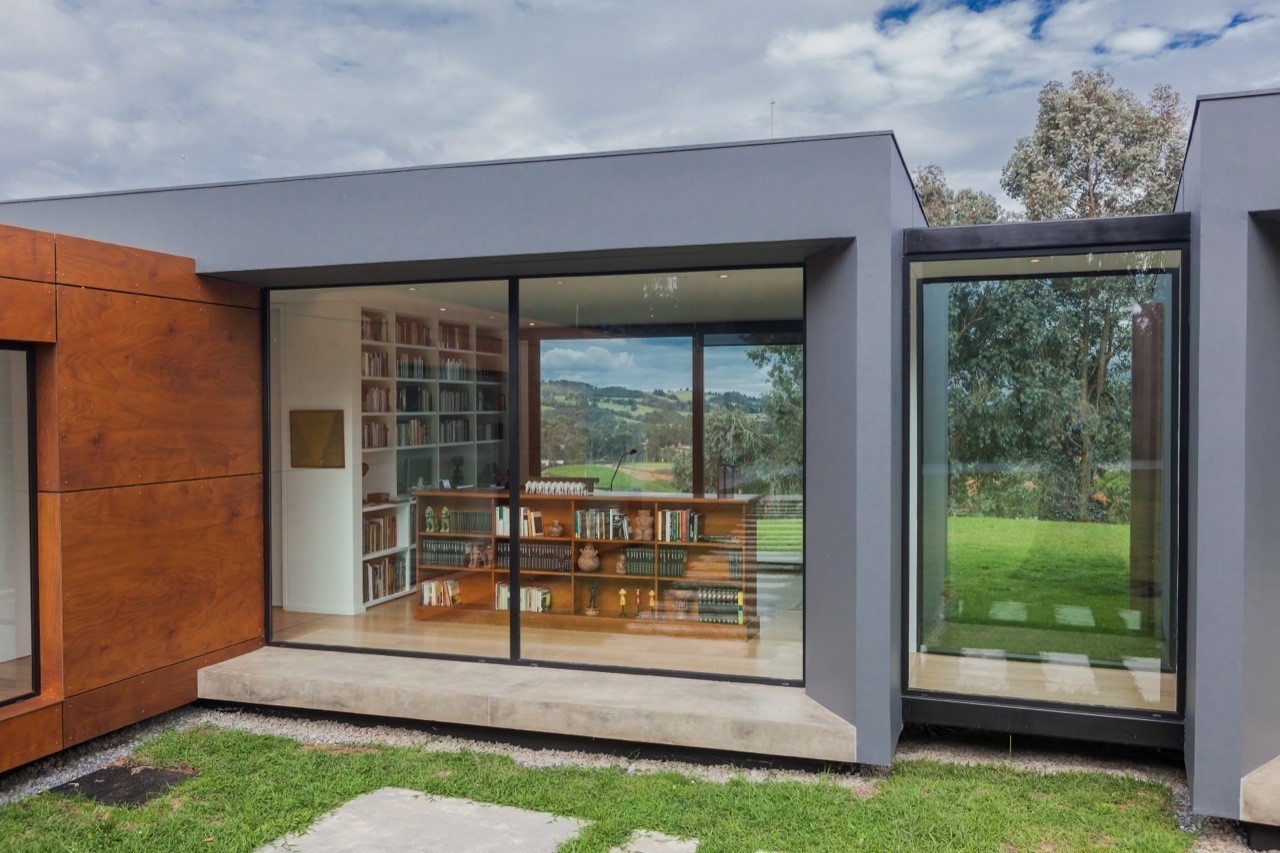Project: The House in the Air
Architects: Andrés Uribe Mesa
Location: Envigado, Colombia
Area: 4,628 sf
Photographs by: Carlos Tobon
The House in the Air by Andrés Uribe Mesa
Andrés Uribe Mesa has designed the House in the Air project in the hills of Envigado, Colombia. This wonderful, single story dwelling of 4,628 square feet sits on a vast piece of land with an intimate connection with the natural surroundings.

Andrés Uribe Mesa conceived and designed a house sitting on a 7,000 m2 piece of land, aiming to find an intimate connection with the natural environment surrounding it. «When I come across a landscape like this, with a forest of different species of native trees, confronted with a view of an endless horizon, I seek to “bring” the exterior in the house», explains the architect.
This relation with the surroundings determined the external aspect of the construction, thought with the idea of absolute simplicity, trying not to stand out in the property. The three volumes that conform this 430 m2 home, elevate 36 cm above the ground to generate a sense of levitation, and, although the house design is linear, it follows a sinuous layout, looking as casual as some “boxes” left randomly on the grass.
The brick walls, reinforced with concrete columns and flat roofs, made from thermal acoustic material, form several “porticoes”, out of which, three different volumes come out as if wooden drawers: two, conforming the kitchen, and the main bathroom, and a third larger volume that comprises the entertainment room, guestroom, laundry and garage.
For the facades, the architect prepared in situ a mixture of grey paint that blends in the house, against the surrounding green and the sky; however, for the three volumes described above, he covered the facades with treated natural wood laminates, weatherproofed and resistant to UV discoloration.

A portico made from rusted steel panes, sitting on a concrete slab, creates the access to the central volume of the house, at a point limiting the living room and the dining room, next to which is the kitchen, that can be readily kept apart by means of two large sliding doors, if needed.
Two enclosed glass “connectors” run across the distance between the three volumes: one leads to the master bedroom, that has access to the garden by means of floor to ceiling sliding glass doors. Access to the garden is a possibility in all other rooms as well. The second glass connector joins the living room with the reading room where all the books sit on shelves that are incorporated to the walls. Between the bookshelves there is an antique cast iron heater. Next to this room there is an entertainment room followed by the guest room and a smaller maid’s room, laundry and garage.
Uribe doesn’t hide his admiration for Mies van der Rohe’s architectural concepts and he conforms to those principles when choosing a very precise selection of finishes: gray facades, white interior walls, bamboo floors and floor to ceiling sliding glass doors, in most areas. Similarly, the clarity perceived throughout the house during the day is maintained at night thanks to a well-conceived illumination design.
Such a extremely simple design requires a rigorous control of all details and careful use of construction techniques, because in an architectural design apparently so simple, there is no room to hide mistakes nor hide imperfections.
-Andrés Uribe Mesa














